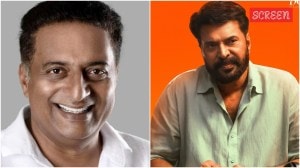Statue,statue
The politics of portraits and statues in Parliament is prone to contentiousness,but is an incident apart.
The politics of portraits and statues in Parliament is prone to contentiousness,but is an incident apart. At a recent meeting of the curious named Committee on Installation of Portraits/ Statues of National Leaders and Parliamentarians,a decision was taken on B.R. Ambedkars reading matter of public display. Ambedkars death anniversary was approaching,and the MPs wondered whether to give identity to the book hes shown holding in the statue in the Parliament House Complex. The Constitution of India it would be,they decided,before slipping into another discussion on what language edition the Father of the Constitution should be holding. Predictably,fresh chalk paint shows it to be a bilingual copy.
Thats settled for now,but another decision of the committee is equally intriguing. Now on,it was decided,no more statues would be installed in the complex,only portraits. The politics of portraiture is deeply contested in Parliament and you only have to go back a few years for examples of fresh inductees like Savarkar and M.G. Ramachandran. In fact,the debate has swung between putting a freeze on new representations and just letting them all in. There is a good case for keeping space for new portraits,to deepen representation and reflect how the pluralities of this country continue to inform politics.
However,as the discussion on the Ambedkar book on which word is out that the decision is not final shows,portraits and statues become focus points for political contests. The DMK MP in this case wanted English,his SP colleague Hindi. Ambedkar,of course,finds acceptance across the spectrum. But as a greater number of more recent public figures find representation through portraits,contentiousness is bound to increase. That is not a case for limiting new faces,instead it may be a call against mandatory reverence.



- 01
- 02
- 03
- 04
- 05




























